ISFAHAN TRAVEL GUIDE
Things to Do in Isfahan – Activities & Attractions
—————————Ο————————

Things to Do in Isfahan – Activities & Attractions
—————————Ο————————
On the tip of every Esfahani’s tongue is an old Persian proverb: Esfahan nesf-e jahan – Esfahan is half the world. Once the magnificent capital of Shah Abbas’s Safavid Empire, Esfahan is brimming with historic delights, some of which date back to pre-Islamic Iran. Here we explore the best things to do and see there.
 Naqsh-e Jahan Square
Naqsh-e Jahan Square
(also known as Imam Square) is the overwhelmingly impressive central attraction of Esfahan, which features a number of architectural wonders. At the southern edge of the square, which stretches over half a kilometre in length, is the Imam Mosque (or Shah Mosque). Completed in 1629, the UNESCO world heritage site is arguably the premier example of Iran’s Islamic architecture. Intricate blue-tiled mosaics, splendid Quranic calligraphy, glittering iwans, towering yet delicate minarets, perfectly geometrical floral motifs – the dazzling aesthetic unity of this structural masterpiece is widely regarded as one of the most beautiful mosques in the world. It is the second largest square in the world after Tiananmen Square.
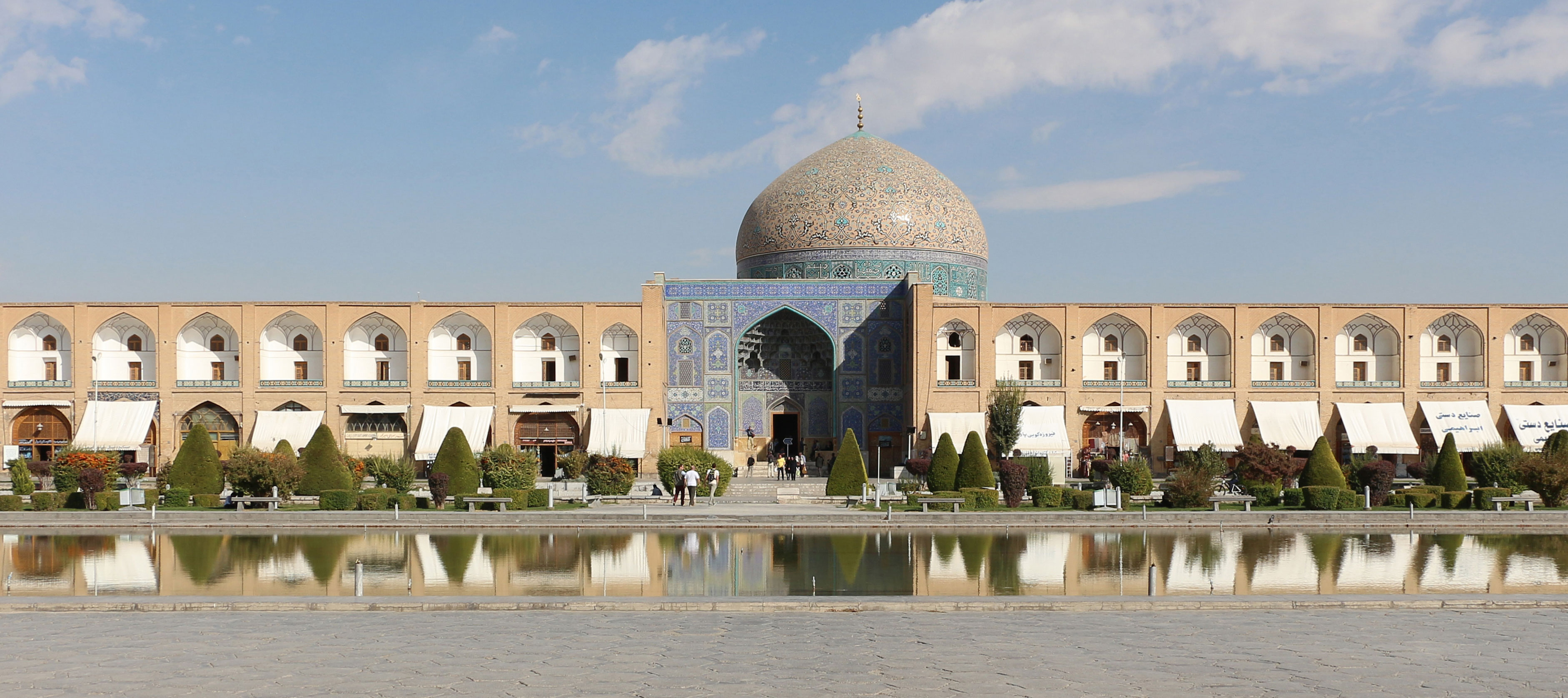
Along the eastern side of Naqsh-e Jahan Square is the no less inspiring Sheikh Lotfollah Mosque. Finished ten years earlier than the more substantive Imam Mosque, Sheikh Lotfollah is notable for its golden-creamy tile work and complex arabesques, not to mention the imposing central dome – mesmerising from both the inside and out. Unusually lacking in minarets, the mosque was originally intended for private use by members of the royal court, and was designed by Sheikh Bahai during the reign of Shah Abbas.
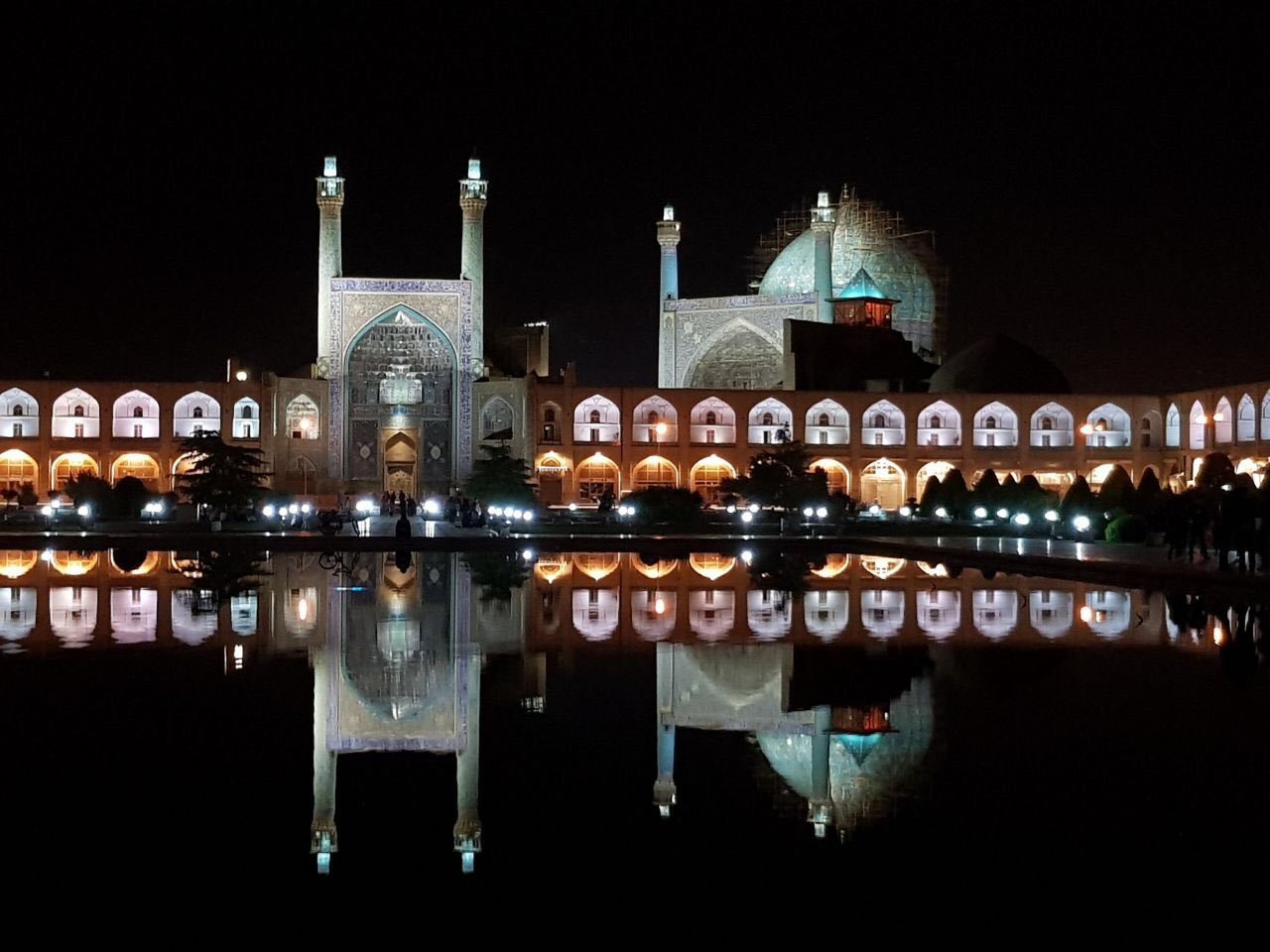
(known as Shah Mosque before 1979 revolution) is a part of the complex of Naqsh-e Jahan Square – the main attraction of Isfahan. It is regarded as one of the masterpieces of Persian architecture in the Islamic era. Along with Naqsh-e Jahan Square, the mosque is registered as UNESCO World Heritage Site and is a popular destination for tourists visiting Isfahan. Imam Mosque was built between 1611 and 1629 as a part of Naqsh-e Jahan Square complex by decision of Shah Abbas. The task for the leading architect of the project, Shaykh Bahai, was to build a mosque that would symbolize the contribution of clergy in the Empire’s power structure. Imam Mosque was intended to replace the old Jameh Mosque for Friday praying. Shaykh Bahai planned also to build two schools on the territory of the mosque, but Shah Abbas wanted the mosque to be ready before his death, so the construction process had to be shortened. Imam Mosque turned out to be the majestic building with the biggest dome in the city, but the construction was finished few months after Shah’s death. Imam Mosque consists of two structures: gorgeous entrance gate with two minarets and the main building of the mosque with a big dome and minarets as well. The mosque yard lies between them. The entrance is made in a shape of iwan – vaulted structure, the distinct feature of Islamic architecture of Seljuk and Safavid dinasties. One of the prominent features of Imam Mosque is its peculiar orientation. While that time most of the important buildings were built facing towards Mecca, the entrance of the mosque leads another way. But after entering the entrance gate of the mosque, one makes a slight turn to the right as the portal leads him, and coming out in the yard of the mosque, faces exactly Mecca direction. Due to this trick, both structures – the entrance and the main dome of the mosque, are equally visible from the square, not blocking the view of each other. The unique architectural feature of the mosque – its acoustic properties. Anyone speaking under the dome will be clearly heard by anyone inside. The variety of blue colors in interior and exterior tiled walls became the signature of the mosque.
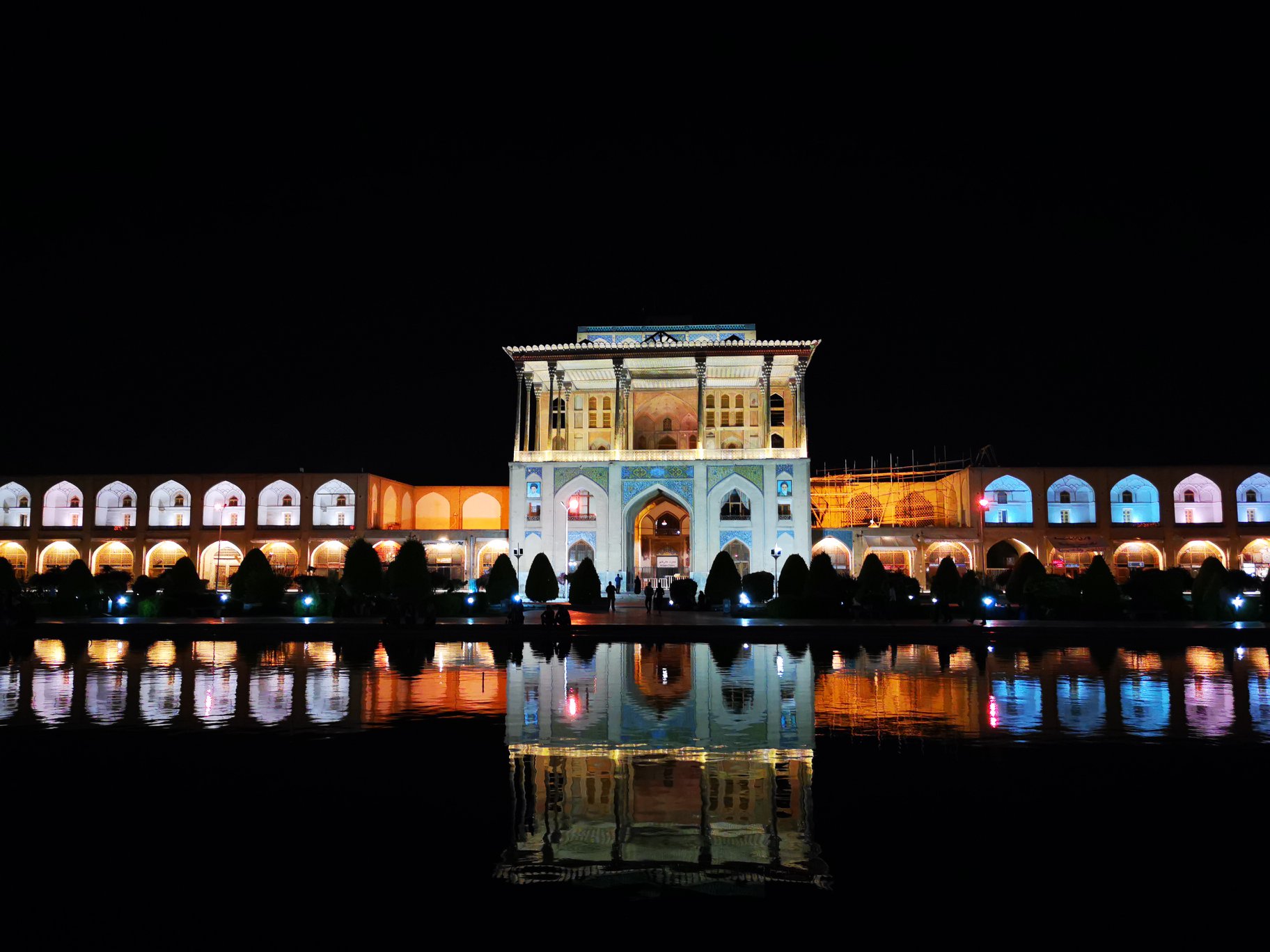
Opposite the Sheikh Lotfollah Mosque is the towering, six-storey Ali Qapu palace, a royal residence used by Shah Abbas to host visiting dignitaries. Completed at the end of the 16th century, it houses various paintings and frescoes, and the columned terrace boasts exceptional views of the square and its mosques. Depicted on the reverse side of 20,000 Rial banknotes, the palace is a national treasure, although much of the building fell into disrepair under subsequent ruling dynasties. The sixth-floor music room is a particular highlight for the wonderful shapes cut into the walls and ceiling.
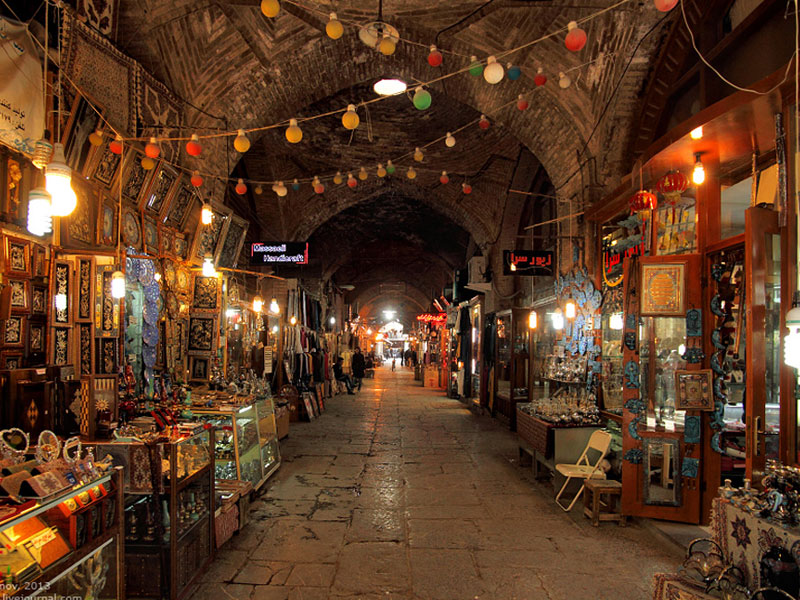
(a.k.a. Quesarieh or Imperial Bazaar) links the Shah mosque in Imam Square with the Jameh Mosque. Parts of it date back over a thousand years, but the majority dates to the Shah Abbas period (16th Century). The bazaar is a maze of alleyways, madrassas and caravanserais and is probably the best place in Iran for souvenir and gift shopping including many arts and crafts for which Isfahan is famous.
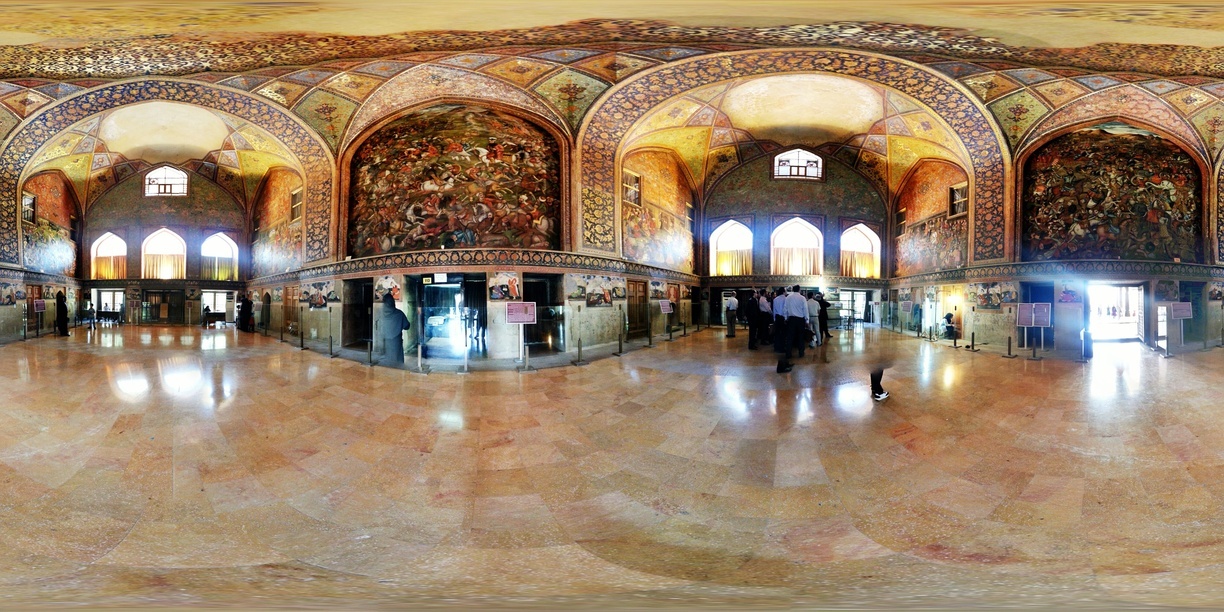
was built by Shah Abbas II in the 17th century. The 20 wooden columns of the palace are reflected in the surface of the pool and give rise to its nickname, ‘Palace of Forty Columns’. The Throne Hall has a fascinating series of frescos with imposing historical scenes above them on the upper walls. The perfectly-manicured palace garden Bagh-e Chetal Sotun is UNESCO listed.
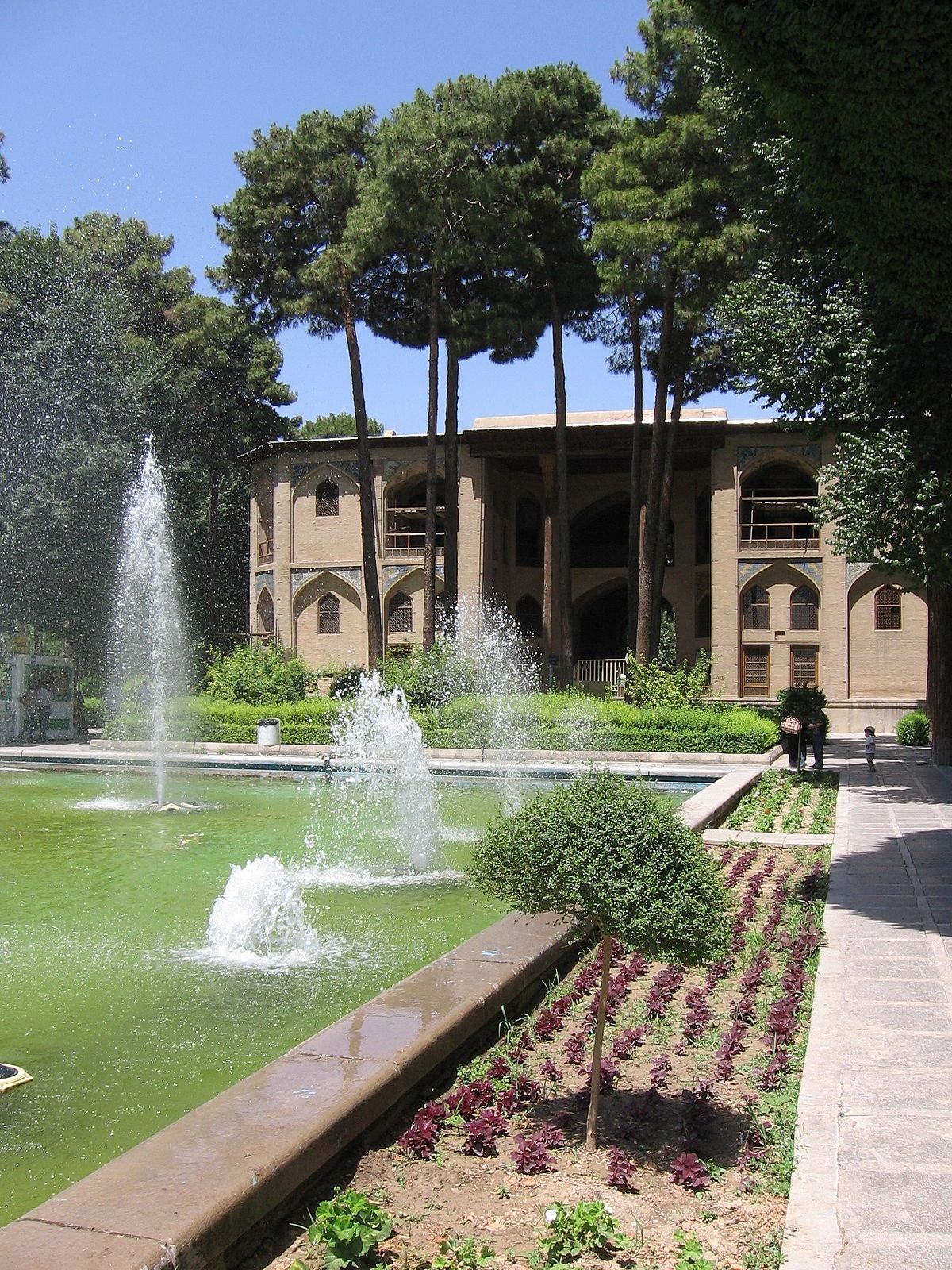
One of the two gardens in Chahar Bagh Street (the Four Gardens) is Hasht Behesht Palace and its garden. Hasht Behesht Palace is One of the remaining monuments of Safavid Era . Its brilliant architecture along with its design and decoration have made it a legendary palace. It has four different façades each one visible through a particular angle. There is also a garden around this structure from which not much has remained. However, a park has recently been established near the building with modern affiliations.
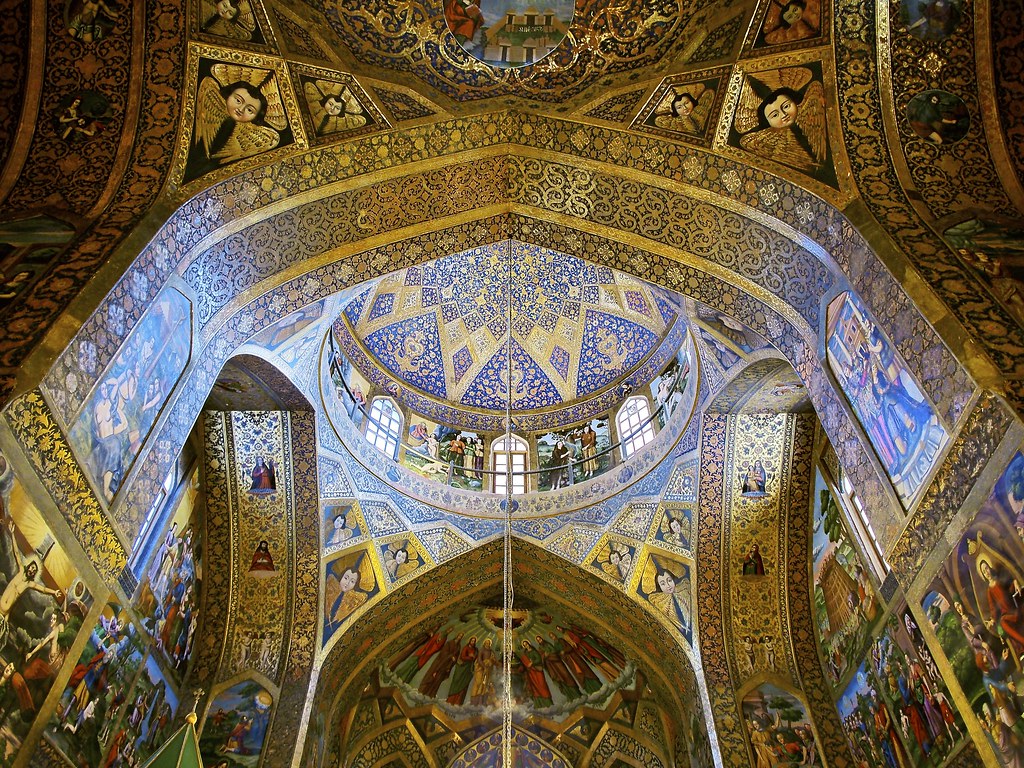
(a.k.a Jolfa or New Jolfa) dates back to the era of Shah Abbas I, who transported Christian craftsmen from the town of Jolfa in Northwest Iran. Today it boasts 13 Armenian Churches, the most important and interesting of which is Vank Cathedral In the early 17th century, hundreds of thousands of Christian Armenians from northwest Iran were resettled in Esfahan by Shah Abbas – Vank Cathedral is the most impressive of their subsequently constructed places of worship. The outside of the cathedral is fairly plain, yellowy-brown brickwork. By contrast, the inside boasts elaborate and colourful frescoes, containing some disturbing depictions of the terrors of hell. There is also a fascinating museum (which displays Shah Abbas’ original edict establishing the new Armenian town), and a memorial to the Armenian Genocide.
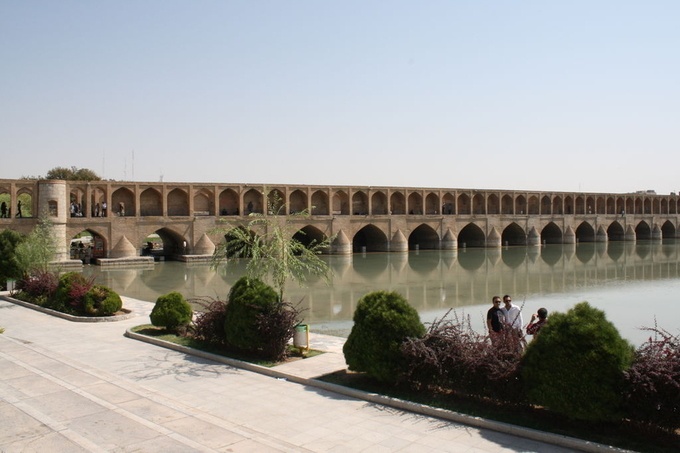
Si o Seh – literally meaning “33” – Bridge is so named due to its 33 arches that stretch across the Zayandeh River. Built at the turn of the 17th century, the bridge extends to nearly 300 metres in length, making it the longest bridge in the city. Beautifully symmetrical, and especially atmospheric when lit up at night, Si o Seh Bridge is one of Esfahan’s most recognisable landmarks and a fine example of Safavid bridge-building.
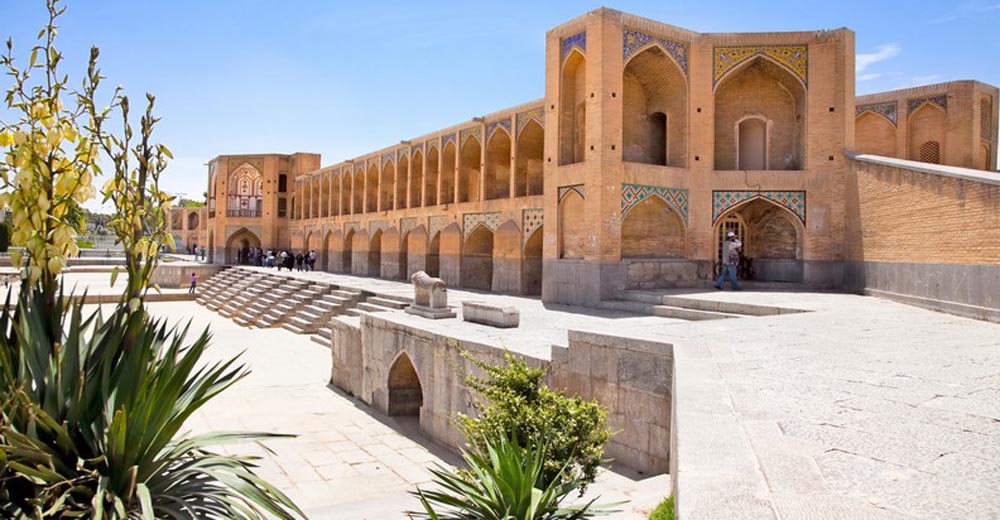
One of the most beautiful bridges of the world. Khaju is a name of small district in the neighborhood of bridge. It is about 132 meters long and 12 meters wide. The Khaju Bridge is made of two decks (floors). This bridge was built to work for different purposes. As a bridge connected the old Isfahan to villages located on the southern side and also connected Isfahan to Shiraz road. It was built as a wonderful recreational place. Steps in front of bridge and arches in the first deck have been used to relax and listen to the sound of water. It was used as a dam too. Water canals of bridge were closed during spring and summer seasons. Water was reserved on the western side of bridge, then diverted to Maddies and distributed to different districts of city, used for gardening, and agricultural purposes. Houses which were built among Madies, after few meters of digging wells, citizens could use filtered and clear drinking water. A beautiful garden city with houses full of small gardens and great numbers of fruit trees. The Khaju Bridge was built in the 15th century, during Tamerlane’s successors. In 1650 the bridge was reformed and constructed during the time of Shah Abbas the second. It has been repaired specially in 1837.
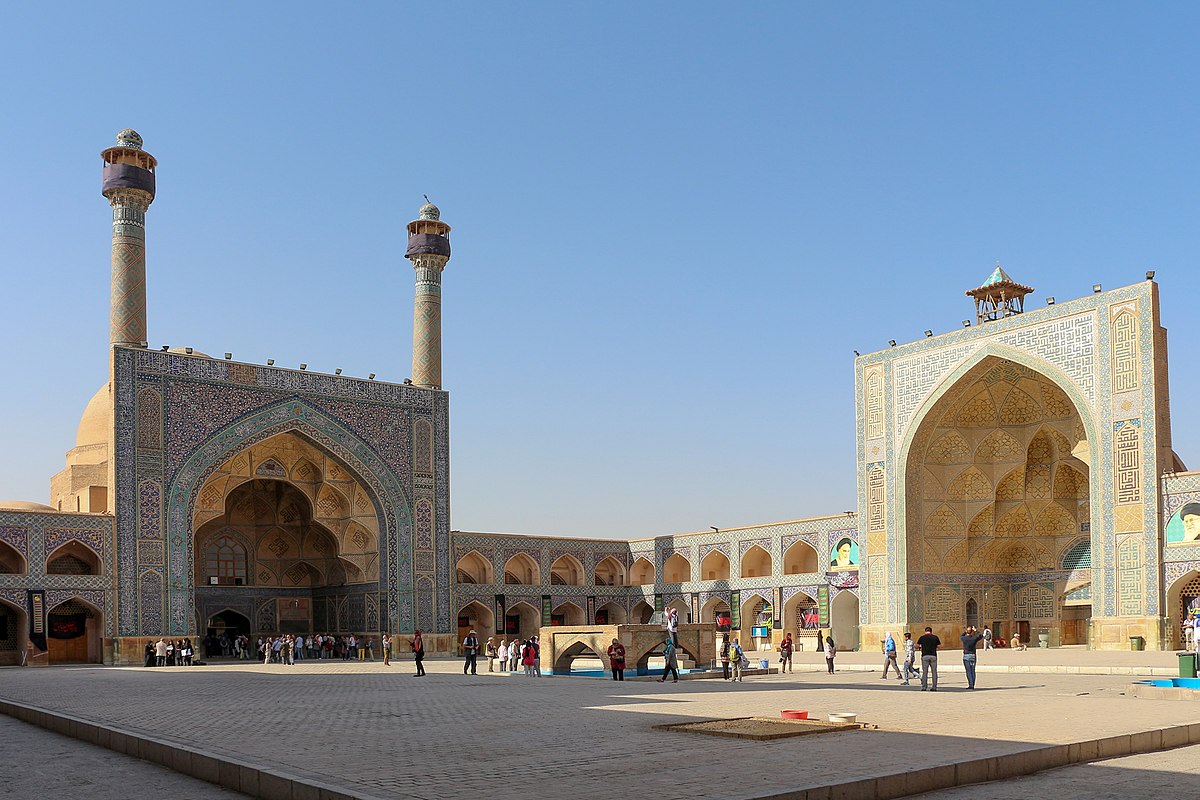
Dating back to the 8th Century, the Jameh Mosque has undergone numerous remodelling and renovations over the centuries, making it an eclectic mix of Islamic architecture, featuring contributions from the Seljuks, Mongols, and Safavids. Located to the north of the Grand Bazaar, the two Seljuk brick domes are arguably the mosque’s most celebrated aspect, although the entire complex – replete with a glazed tile work and ornate motifs – is a delight to behold.